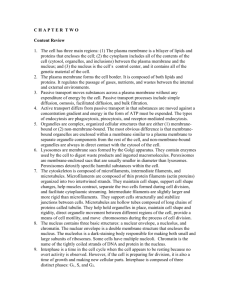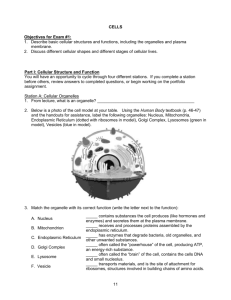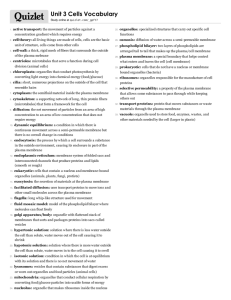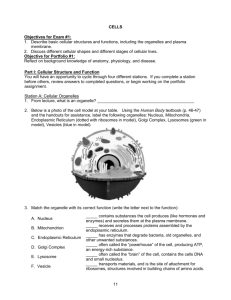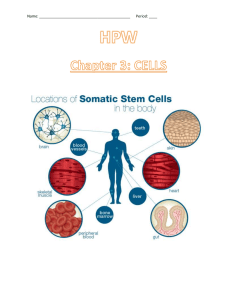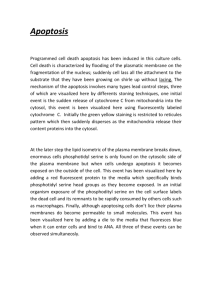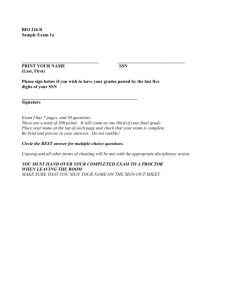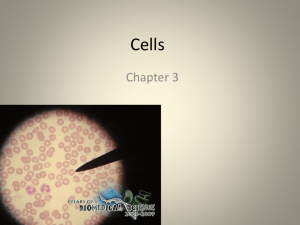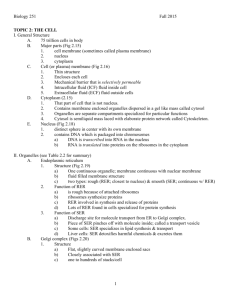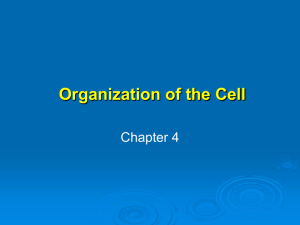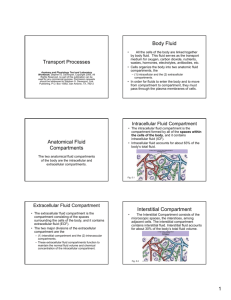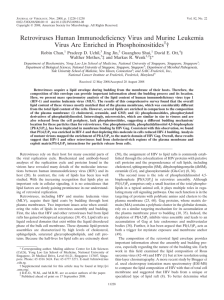Cells (Cytology) – Ch. 2 – Complete Version Human Anatomy
advertisement
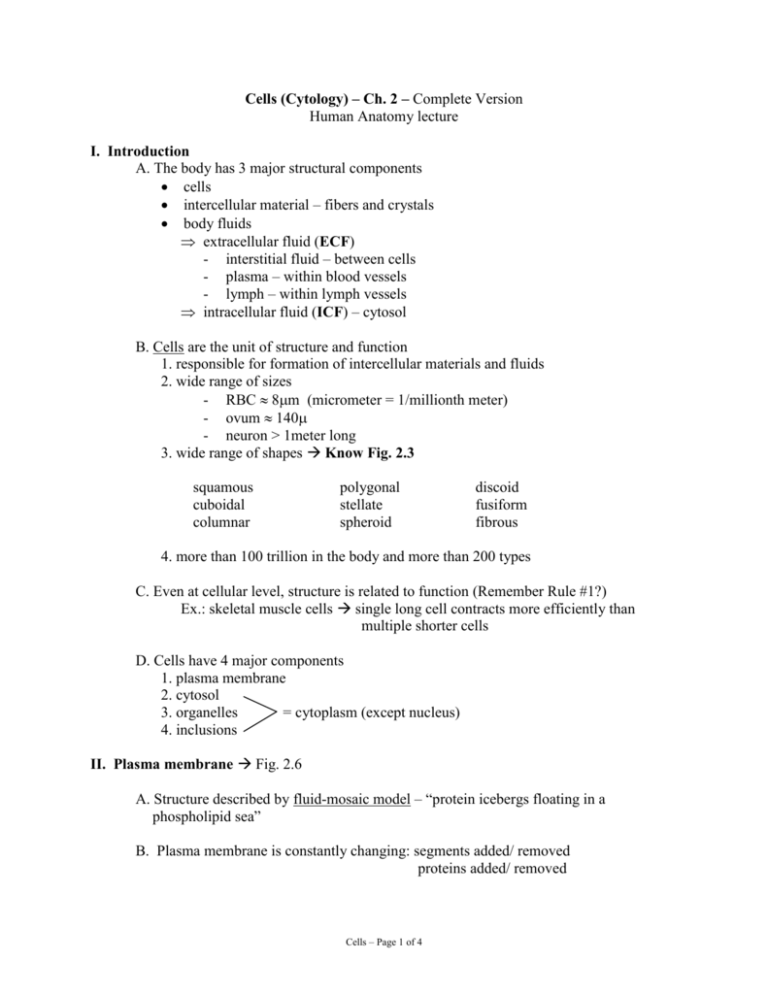
Cells (Cytology) – Ch. 2 – Complete Version Human Anatomy lecture I. Introduction A. The body has 3 major structural components cells intercellular material – fibers and crystals body fluids extracellular fluid (ECF) - interstitial fluid – between cells - plasma – within blood vessels - lymph – within lymph vessels intracellular fluid (ICF) – cytosol B. Cells are the unit of structure and function 1. responsible for formation of intercellular materials and fluids 2. wide range of sizes - RBC 8m (micrometer = 1/millionth meter) - ovum 140 - neuron > 1meter long 3. wide range of shapes Know Fig. 2.3 squamous cuboidal columnar polygonal stellate spheroid discoid fusiform fibrous 4. more than 100 trillion in the body and more than 200 types C. Even at cellular level, structure is related to function (Remember Rule #1?) Ex.: skeletal muscle cells single long cell contracts more efficiently than multiple shorter cells D. Cells have 4 major components 1. plasma membrane 2. cytosol 3. organelles = cytoplasm (except nucleus) 4. inclusions II. Plasma membrane Fig. 2.6 A. Structure described by fluid-mosaic model – “protein icebergs floating in a phospholipid sea” B. Plasma membrane is constantly changing: segments added/ removed proteins added/ removed Cells – Page 1 of 4 C. Functions 1. defines cell boundary 2. selective permeability – controls passage of materials in/out of cell D. Extensions aid in absorption, movement, & sensory processes Fig. 2.15 1. microvilli 2. cilia 3. flagella Cells – Page 2 of 4 III. Organelles – Fig. 2.5 & 2.17 Match the following descriptions with the appropriate organelle. __________ single, elongated projection of plasma membrane containing 9 pairs of microtubules; capable of moving entire cell __________ membranous sac containing digestive enzymes that break down microbes & molecules __________ surrounded by double membrane; contains genes and controls cellular activities __________ includes three types of protein filaments (microtubules, microfilaments, and intermediate filaments) that give the cell shape and enable coordinated movements of organelles __________ non-membranous site of protein synthesis; may be free in cytosol or attached to endoplasmic reticulum __________ consists of pericentriolar area and centriole pair; organizes microtubules __________ double-membrane sac that is the site of most ATP production __________ numerous, short motile projections of plasma membrane capable of moving substances along surface of cell __________ membrane-bounded channel network that provides surface area for many cellular chemical reactions; synthesizes lipids and detoxifies certain molecules __________ membranous sac containing enzymes that use oxygen to oxidize potentially toxic substances __________ stack of disc-shaped membrane-enclosed cisterns; packages proteins and lipids for export and forms lysosomes __________ dark-stained intranuclear mass composed of protein & RNA; site of ribosome assembly __________ short, non-motile extensions of plasma membrane that increase the surface are for absorption/secretion nucleus endoplasmic reticulum(ER) lysosome mitochondria microvilli ribosome Golgi complex peroxisome cytoskeleton Cells – Page 3 of 4 cilia nucleolus centrosome flagellum IV. Inclusions A. Not membrane-bound, nor defined shape, nor permanent B. Clumps of chemical substances produced by cells for storage or export Ex: fat, glycogen, or melanin or C. Foreign bodies (dust, viruses, bacteria) V. Cytosol (intracellular fluid - ICF) A. Water: 75-90% B. Proteins: 15-20% C. Carbohydrates, lipids, and ions RESULT: A clear gel-like state of variable solidity (Jell-O is only 2% protein) D. Many cellular metabolic reactions occur here Cells – Page 4 of 4



